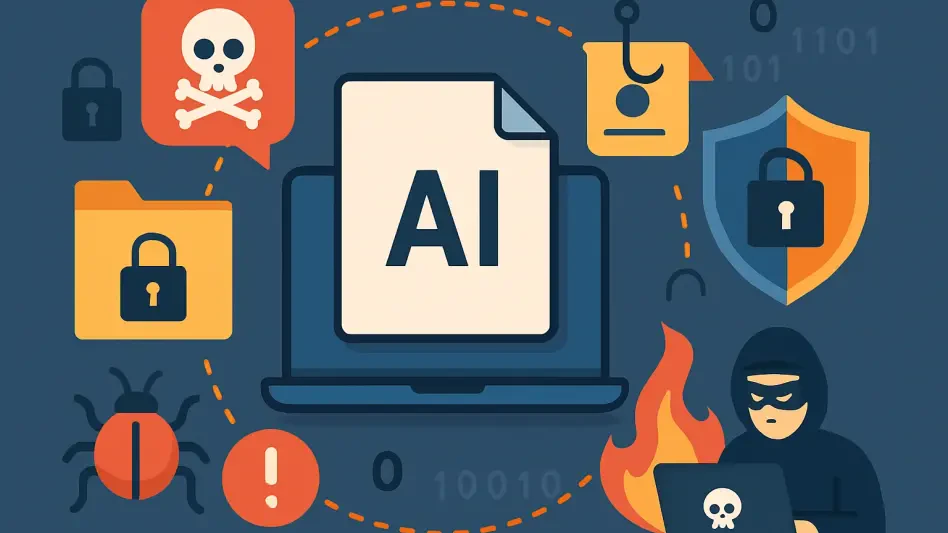In an era where digital threats evolve at an unprecedented pace, a staggering 61 percent of organizations have encountered file-related breaches in recent years, with each incident carrying a hefty average cost of $2.7 million, highlighting the urgent need for stronger defenses. These alarming figures, drawn from a comprehensive study by a leading cybersecurity research institute, underscore a growing vulnerability in enterprises worldwide. The primary culprits behind these breaches often lie within the organizations themselves, as negligent or malicious insiders exploit gaps in security protocols. Beyond internal risks, the rapid advancement of artificial intelligence (AI) introduces a dual-edged sword—while it offers innovative ways to detect threats, it also empowers adversaries to craft sophisticated attacks. This dynamic has pushed file security to the forefront of corporate concerns, demanding immediate attention to safeguard critical data against an ever-shifting threat landscape. The urgency to adapt and strengthen defenses has never been more apparent as businesses grapple with the high stakes of digital exposure.
The Dual Impact of AI on File Security
As organizations increasingly turn to AI for enhanced threat detection and operational efficiency, a troubling reality emerges: malicious actors are also harnessing generative AI to exploit vulnerabilities in file systems. This technology enables attackers to embed harmful prompts in macros or uncover hidden data, creating new avenues for breaches that traditional tools struggle to counter. Despite these emerging dangers, fewer than half of surveyed enterprises express confidence in securing files during essential processes like uploads, transfers, or third-party sharing. The financial toll of these incidents is staggering, with millions lost per breach, amplifying the need for robust solutions. AI’s potential to revolutionize cybersecurity is undeniable, but its misuse by adversaries highlights a critical gap in preparedness. Enterprises must navigate this complex landscape, balancing the benefits of AI-driven defenses with the risks posed by its exploitation, to protect sensitive information from increasingly cunning threats.
Moving Toward Modern Security Architectures
Looking ahead, a significant shift is underway as enterprises move away from outdated, single-purpose security tools toward comprehensive, multi-layered platforms. These advanced systems integrate cutting-edge technologies such as multiscanning, Content Disarm & Reconstruction (CDR), and adaptive sandboxing to fortify defenses. Industry projections suggest that by 2026, two-thirds of organizations will adopt such solutions, reflecting a growing consensus on the necessity of a zero-trust approach to file handling. Experts emphasize that cyber resilience is no longer just a technical issue but a fiscal imperative, urging executives to invest in adaptive technologies that mitigate both risks and costs. Unified security platforms are seen as vital to protecting complex file ecosystems, extending beyond organizational boundaries. Reflecting on past challenges, many leaders acknowledged that clinging to legacy systems proved unsustainable. Instead, strategic investments in modern architectures emerged as the cornerstone of safeguarding data in a hostile digital environment, setting a new standard for cybersecurity practices.








